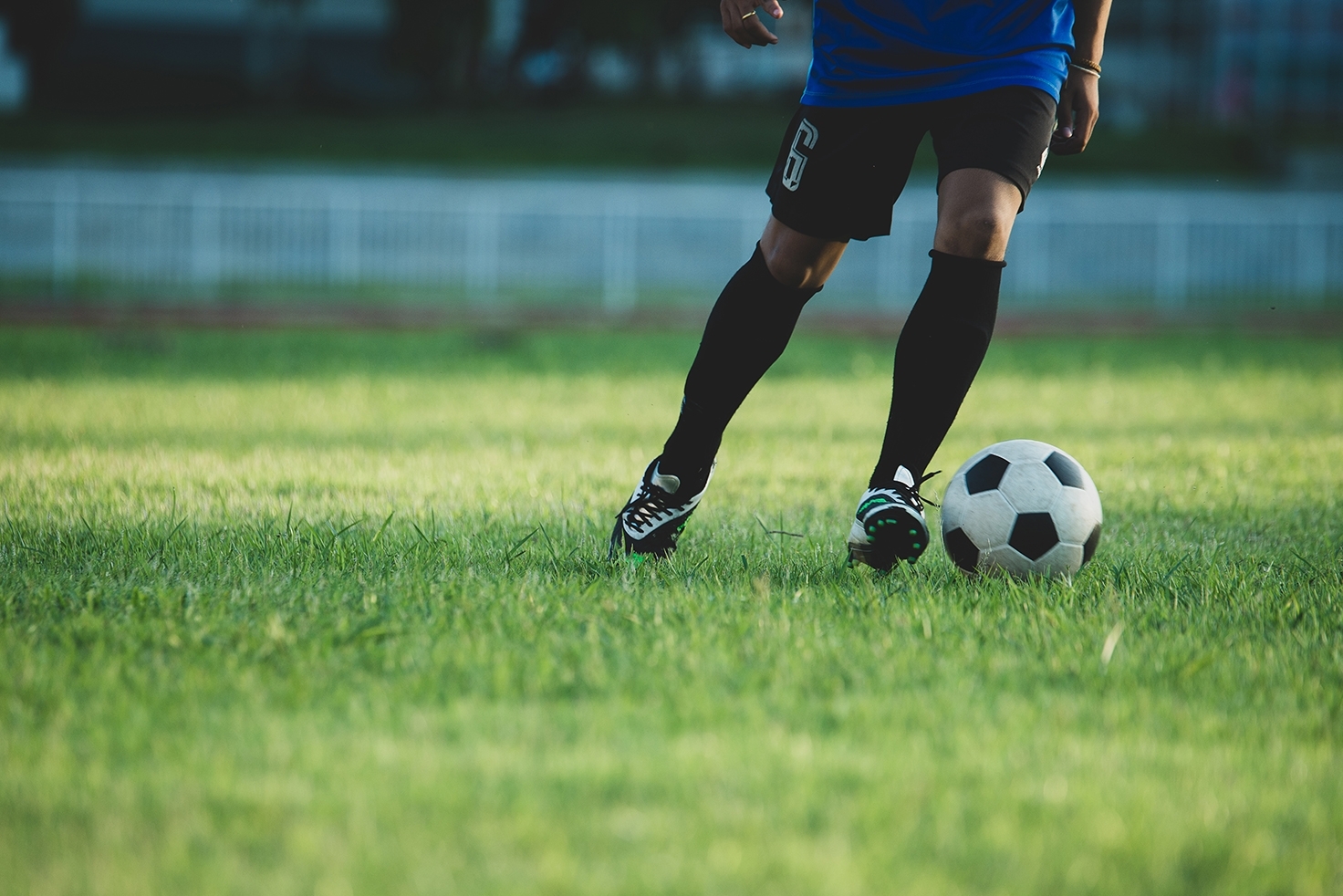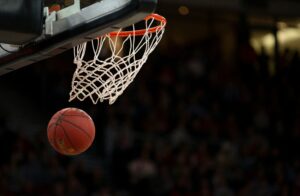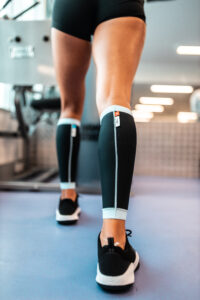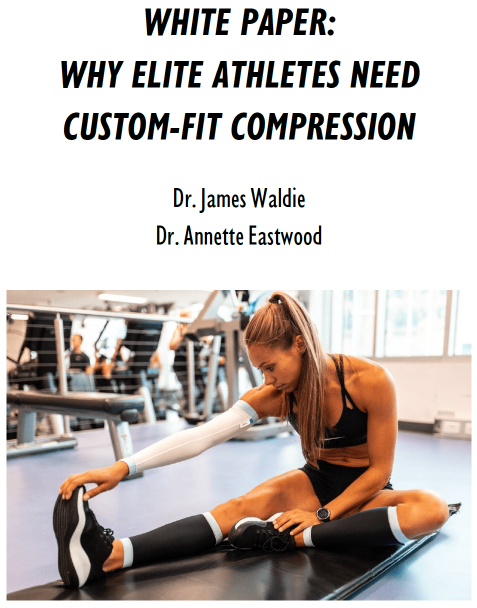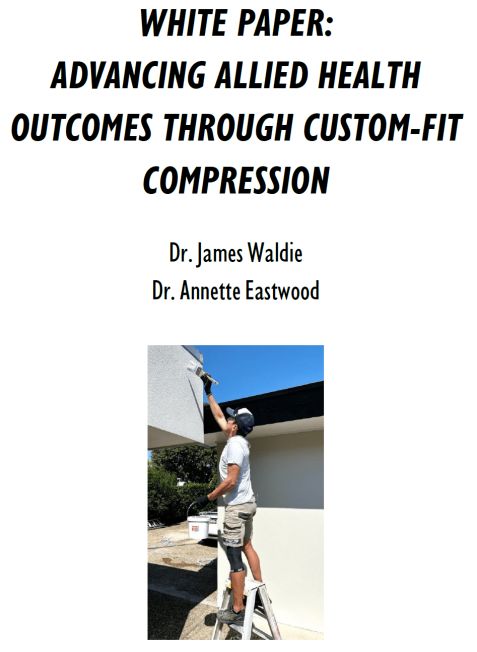Compression garments have been widely used by soccer players for many years. We take a look into the demands of the game, competition schedules and how compression garments can assist soccer players with performance, recovery, and busy travel schedules.
Demands of professional soccer
The physiological demands of a professional soccer match are high. It has been reported that professional soccer players on average cover 10-12 km during a game at various different intensities (Di Salvo et al., 2013).
On average, during a high-level soccer game, players engage in physical activities of high intensity every 60 seconds and can perform up to 40 sprints per game (Di Salvo et al., 2013). A soccer game also includes a number of accelerations, decelerations, jumps and rapid change of direction and tackles (Nédélec et al., 2012). These activities have an eccentric component which have the potential to cause exercise induced muscle damage (Nédélec et al., 2012).
Fixture congestion in professional soccer
Highly congested game schedules are common in professional soccer. In some cases, elite players can have two or three games in just seven days. (Marques Jiminez et al., 2018). A recent systematic review showed that 72 hours is insufficient for full recovery following a soccer game (Silva et al., 2018), therefore during periods of schedule congestion, players may not be fully recovered between games. It has also been suggested that players participating in two or more games per week with less than 4 days recovery are at greater risk of injury (Alterriba – Bartes et al., 2020).
How can compression garments benefit soccer players?
Given the significant physiological demands of professional soccer and the congested schedules, it is important for soccer players to use strategies to maximise recovery between games and training sessions. Compression garments have been shown to have a beneficial effect on recovery by reducing feelings of muscle soreness post exercise.
Wearing compression garments during a soccer match and for 7hr per day in the 3 days post match, was shown to enhance recovery (Marques Jiminez et al., 2018). Compression garments had a positive effect on attenuating markers of exercise induced muscle damage following the soccer match and reducing swelling in the muscle groups exposed to compression. It was reported that wearing compression garments during recovery also improved players perceptual recovery. It was recommended that players should use compression garments during periods of high intensity training or match congestion to improve physical and psychological recovery (Marques Jiminez et al., 2018).
In a specific study looking at the effects of wearing compression garments during two soccer matches 72 hours apart, it was shown that compression garments reduced perceived muscle soreness and increased high intensity running in the second match (Gimenes et al., 2021). Therefore, wearing compression garments is a useful strategy for soccer players to enhance performance and reduce muscle soreness when there is a short time between games.
Given the busy travel schedules that most soccer players will experience with both domestic and international fixtures, compression garments can be beneficial to reduce the risk of DVT whilst flying, and also maximise performance at competition. It has been shown that wearing compression garments on a 6-hour flight can attenuate the decrement in performance associated with travel (Kraemer et al., 2016).
Custom fit – The new world of compression for soccer players
So compression can aid recovery of soccer players but how do you optimise it? For compression garments to be effective, it’s important that they fit correctly and that accurate compression regimes are applied. Standard fit (off the shelf garments) which are sized based on height and weight, have been shown to provide variable levels of compression and inconsistent benefits (Hill et al., 2015, Brown et al., 2022). Given the differences in body composition of elite athletes, it is therefore impossible for all athletes in a team to receive accurate compression with off the shelf brands.
So how can you ensure genuine and consistent benefits across a range of athletes in a team? CAPE custom fit compression garments are sized to each individual athlete based on a 3D scan to ensure that each athlete receives correct fitting garments with accurate compression regimes for maximal benefits.
A recent study comparing custom fit garments to off the shelf garments, showed that custom fit resulted in faster recovery of strength measures in rugby players compared to the off the shelf garments, which provided no greater benefit than a sham treatment (Brown et al., 2022). With custom fit compression, creatine kinase returned to baseline within 48 hours which would be of benefit to soccer players who experience muscle soreness post game.
Considering the game demands, scheduling and travel requirements of elite soccer, it is important to optimise player recovery. Custom fit is the most advanced compression available to athletes and has been proven to be superior to off the shelf brands in terms of pressure applied and physiological benefits. For elite soccer players wanting to enhance recovery and performance, custom fit compression is the obvious choice.
REFERENCES
- Altarriba-Bartes A, Peña J, Vicens-Bordas J, Milà-Villaroel R, Calleja-Gonzalez J (2020) Post competition recovery strategies in elite male soccer players. Effects on performance: A systematic review and meta-analysis. PLoS ONE 15(10).
- Brown, F, Jeffries, O, Gissane, C, Howatson, G, van Someren, K, Pedlar, C, Myers, T, and Hill, JA. (2022): Custom-fitted compression garments enhance recovery from muscle damage in rugby players. J Strength Cond Res. 36(1): 212-219
- Di Salvo, V., Pigozzi, F., González-Haro, C., Laughlin, MS., De Witt, JK., (2013). Match Performance Comparison in Top English Soccer Leagues. Int J Sports Med 34: 526–532
- Gimenes, SV, Marocolo, M, Pavin, LN, Pagoto Spigolon, LM, Neto, OB, Correa da Silva, BV, Duffield, R, and Ribeiro da Mota, G. (2021). Compression stockings used during two soccer matches improve perceived muscle soreness and highintensity performance. J Strength Cond Res 35(7): 2010– 2017.
- Hill, J., Howatson, G., Someren, K., Davidson, S., & Pedlar, C. (2015). The variation in pressures exerted by commercially available compression garments. Sports Engineering (Springer Science & Business Media B.V.), 18, 115-121.
- Kraemer WJ. et al., (2016). The effects of a roundtrip trans-American jet travel on physiological stress, neuromuscular performance, and recovery. J Appl Physiol 121: 438–448.
- Marqués-Jiménez, D., Calleja-González, J., Arratibel-Imaz, I., Delextrat, A., Uriarte, F., & Terrados, N. (2018): Influence of different types of compression garments on exercise-induced muscle damage markers after a soccer match, Research in Sports Medicine. Mar;26(1):27-42.
- Nédélec M, McCall A, Carling C, Legall F, Berthoin S, Dupont G. Recovery in soccer: part I – post-match fatigue and time course of recovery. Sports Med 2012; 42(12): 997-1015.
- Silva, J.R., Rumpf, M.C., Hertzog, M., Castagna, C., Farooq, A., Girard, O., Hader, K. (2018). Acute and Residual Soccer Match-Related Fatigue: A Systematic Review and Meta-analysis. Sports Med 48:539–58.
